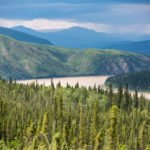NASA High School Internship: Everything You Need to Know
If you’re interested in studying science and technology, the NASA high school internship is a worthy aspiration. NASA internships have two separate paths: internships/fellowships and their Pathways Intern Employment Program (IEP). The primary difference between the two is that the IEP can convert to contract or permanent employment at the end of the program. In this post, we’ll share everything you need to know about the two programs, plus tips for putting together a top application. NASA internships and fellowships are intended to strengthen and increase the size of the nation’s STEM (science, technology, engineering, and math) workforce. These opportunities are offered at four campuses: During the internship, NASA students are paired with a mentor who guides them through research and experiential learning programs. Mentorship is at the heart of NASA’s High School Internship program, made possible by the volunteer scientists, engineers, researchers, and other administrative personnel. These experts in their fields create an exciting work environment, impart new technical and professional skills, and bring along the next generation of thinkers dedicated to space travel. Wondering how much of a difference a high school student can make at a place like NASA? Just a few weeks ago, Wolf Cukier, a high school senior from Scarsdale, New York, discovered a new planet! Wolf is planning on applying to Princeton, Stanford, and MIT—and discovering a new planet will probably look pretty darn good on his college profile. The path to NASA is not always direct; for example, Hend Rasheed, an intern at the Kennedy Space Center, had always dreamed of becoming a doctor, but while studying as a genetics major, she felt something was missing. Hend changed majors seven times before discovering a passion for computer programming. At age 14, Yash Kadadi first contacted his mentor looking for guidance on a project in the field of radiation shielding that he was working on. At the time, he was too young to apply for an internship. Undeterred, Yash continued working on his project for two years until he became eligible. Yash’s advice to others in a similar situation? “Never let anyone tell you that you can’t do anything because of your age.” Brennan Hartigan demonstrated a different type of determination from Yash Kadadi. Since he was five years old, Brennan has been fascinated by space and never lost sight of his dream to work for NASA—he applied for four years before being offered an internship. (Want more? Read even more great internship stories on NASA’s website.) Although there are many paths to a NASA high school internship, there are some eligibility requirements: You will also need to submit: Here’s the most recent application form, which will give you a firsthand look at what information you’ll need to provide. You can also check out NASA’s YouTube video for a detailed account of the application process. As for deadlines, NASA Internships are offered in three sessions: Fall, Spring, and Summer. However, NASA High School Internships are often limited to the summer session. Fall (beginning in late August/early September) and Spring (beginning mid-January) internships are both 16 weeks long, while the summer internship (beginning late May/early June) runs for 10 weeks. Because NASA is constantly rotating new interns through the three sessions, deadlines are always in flux. You should expect to apply at least 3-4 months in advance of the internship session you’re interested in, however. The NASA IEP provides current students and recent graduates with paid work experience, career development, and a jumpstart to their careers as there’s a chance of securing permanent employment at NASA following the program. Additionally, IEP opportunities are available at ten center locations, service centers, and test and research facilities: The IEP is a two-track program: multi-center track and single-center track. Students in the multi-center program have interests and skills that span multiple and sectors—allowing them to transfer positions and locations. Consequently, those enrolled in the multi-track program will have three rotations, at three different locations. Students enrolled on the single-center track possess specialized skills or particular academic interests that fill certain positions at NASA. Single-center students are paired with mentors and advisors to fully explore their area of focus. Participants in NASA IEP contribute to all kinds of projects and fill many different roles. For example, Marissa B. Garcia, a mechanical engineering student from the University of Texas at El Paso (UTEP) is designing and analyzing an avionics unit bracket for the Space Launch System (SLS) Payload Adapter while working at the Marshall Space Flight Center. Tanya Gupta, another mechanical engineering student who attends New York University’s (NYU) Tandon School of Engineering, is serving as the Ops Lead on the PRANDTL-M (Preliminary Research Aerodynamic Design to Land on Mars) aircraft at Armstrong Flight Research Center—an aircraft intended to make the first-ever Martian flight. It’s not just sending crafts into space: Jessica Watkins and Loral O’Hara, both former interns at NASA’s Jet Propulsion Laboratory, are now astronauts. In 2017, the two women were chosen for two of the 12 coveted spots. While NASA’s IEP accepts applicants from a wide range of backgrounds to fill a broad spectrum of positions, there are some requirements you must meet for them to consider your application: Positions in NASA’s IEP are not on a traditional schedule like their high school internship program, rather they’re posted like “real” jobs. Keep an eye on the NASA job page for openings. Check out NASA’s recent webinar about their Pathways Intern Employment Program for an in-depth look at the application process, get introduced to some recently accepted students, and learn some tips for applying. Take Care of the Basics: NASA offers a variety of tips for aspiring interns and IEP participants, but they lead with basics. Make sure your contact information is correct, you use a professional email address, your phone has a professional voicemail message (this one’s easy to forget!), and that your application is free from spelling, punctuation, and grammatical errors. Put Your Best Foot Forward: NASA encourages applicants to approach their applications as they would a job; that is, to lead with all their relevant work and school experience, tailoring the application to the position. Don’t include unrelated work experience, unless you can find a way to tie it to the position you are applying for by highlighting soft skills like teamwork, communication, and work ethic. Describe Your Experience in Detail: Focus on the requirements of the internship/position you’re applying for and demonstrate how you meet them. Don’t write in broad terms, get specific. The S.A.R Method—detailing a situation, the action you took, and the result you received—gives a detailed look at how you approach problems and resolve them. Want access to expert college guidance — for free? When you create your free CollegeVine account, you will find out your real admissions chances, build a best-fit school list, learn how to improve your profile, and get your questions answered by experts and peers—all for free. Sign up for your CollegeVine account today to get a boost on your college journey.
What is the NASA High School Internship/Fellowship Program?
What Do Students Do in the NASA High School Internship Program?
How to Apply to the NASA High School Internship
WHat is the NASA Pathways Intern Employment Program (IEP)?
What do Participants Do in the NASA Pathways Intern Employment Program (IEP)?
How to Apply to the NASA Pathways Intern Employment Program (IEP)
Tips for Applying to the NASA High School Internship and NASA IEP




